While most people conjure up images of veils, mosque, desserts, and women donning hijabs, they'd be surprised to know that the Middle Eastern nation actually shares a number of similarities with the Western World.
With historical sites, tales of ancient folklore, cuisine to whet anyone's appetite, and unique customs of behavior, Iran is a nation where east and west meet in the most unexpected of ways.
The Government Pays For Your Wedding
Weddings cost a fortune in many places around the world, and Iran is no exception. Due to the high cost of weddings, some in Iran began choosing not to marry.


In response, the Iranian government set up an annual fund of $720 million to reduce and cover the cost of spouses-to-be if they choose to have a traditional Iranian wedding. Couples also need to attend an hour-long lecture on contraception in order to get a marriage license in Iran.
Click next to learn how many public holidays Iran has...
Nose Job Capital
Did you know that Iran has humorously been dubbed “the nose job capital of the world?” Why is this you ask?
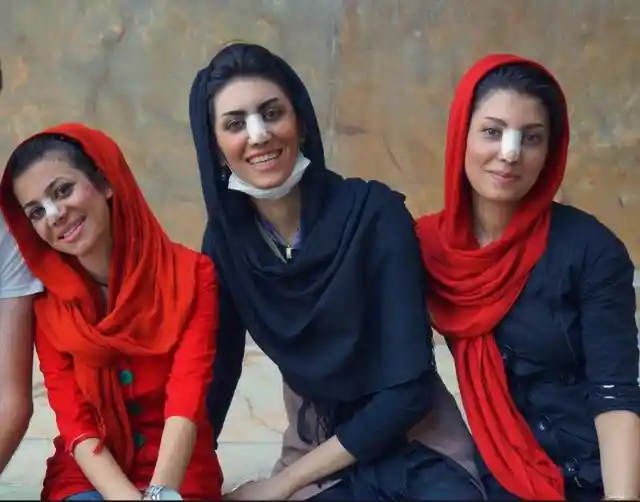

Well, young Iranian women have fallen in love with the “typical” Western nose shape.
No Shortage Of Inspiration
The English word "paradise" has its roots in the Persian word "paridayda" which means "walled enclosure" which subsequently came to indicate the expansive walled gardens of the First Persian Empire.
The vast Persian empire inspired poets throughout the ages and even today many Iranians can recite lines from famous Persian poems.


The most famous of all Persian poems, the "Shahnameh", translated as "The Book of Kings", is recognized as the national epic of Greater Iran.
Happy Holidays
Iranians enjoy one of the most public holidays anywhere in the world. With 25 official public holidays, the holidays may defer on a year to year based on the calendar used.


The country uses three official calendars. As such, Muslim clerics are tasked with calculating the dates for what is predominantly religious holidays.
#RichKidsOfTehran
The Rich Kids of Tehran, hashtag #RKOT, is one of the most popular Instagram accounts from Iran.


Even though the social media application is banned in the country, the young Persian millionaires and billionaires flout the rules by using a secret VPN. The account shows the wealthy young elite in Tehran and other cities in Iran imitating their western counterparts.
Language Of The People
It might come as a surprise to some, but unlike its neighbors, the official language in Iran is not Arabic, but Persian. The locals call the language Farsi. It is spoken by 110 million people worldwide.


Apart from Farsi, several other languages are spoken among the population including Azerbaijani, Kurdish, Gilaki and Mazandarani, Lurish, Arabic, Balochi, Tati and Talysh, Turkmen, and others.
Young People Hold The Balance Of Power
With more than half of Iran's 82 million citizens being under 35 years old, Iran has one of the youngest populations in the world.


The median age in Iran is 30.1 years. One advantage of laws applying to young people is that from the age of 15 anyone can vote.
Three Calendars
The solar Hijri calendar us used as the main national calendar, the solar Gregorian calendar for international events and Christian holidays, and the lunar Islamic calendar for Muslim holidays.

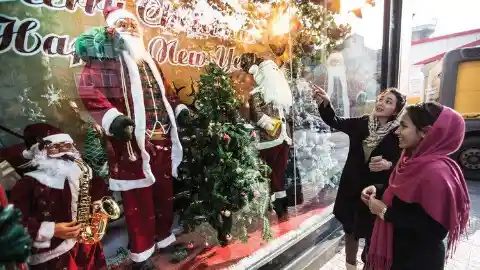
On top of these, a large number of unofficial holidays are added which exacerbate the situation.
Gender Inequality
At the conclusion of the 1979 Iranian Revolution, its entire legal system reverted to Islamic law. This means women were now "downgraded" to a lower class where they were considered mentally, and legally inferior to men.

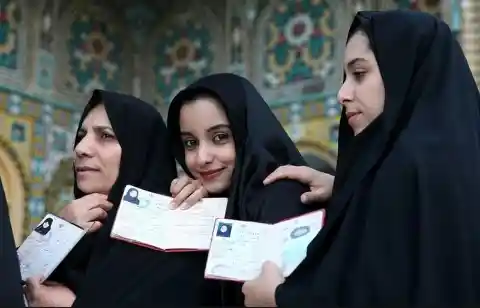
Unlike Saudi Arabia though, Iranian women are allowed to drive, however, they need special permission from their husbands or male head of the household to get a job outside of the house.
Divide And Conquer?
According to UNESCO, Iran's literacy rate was just 37% in the 1970s.


When the 1979 revolution continued, the existing schooling system was overhauled, with the biggest change being Islamization of the education system which included segregation by sex and only issuing textbooks in line with Islamic views. By 2015, the literacy rate stood at 93%.
Tied Down
Following the 1979 Iranian Revolution, western symbols were soon frowned upon. For example, you will not see an Iranian wearing a tie, even to a job interview.


Of course, this doesn't mean the locals don't like to dress up. On the contrary, people do dress up in tie-less suits, and Islamic garb.
Carpet-Diem?
The world's largest carpet was manufactured in Iran in 2007. It is as big a soccer field and was made by the Iran Carpet Company for an Abu Dhabi mosque in the United Arab Emirates.


It measures 60,600.81 ft² (5,630 m²) and was constructed from nine pieces which were put together in the mosque. In fact, part of it had to be taken away due to the carpet being too big.
A Mountain Of Hope
Iran's tallest mountain, Mount Damāvand, acts as a symbol of Iranian resistance again despotism and foreign rule in Persian poetry and literature.
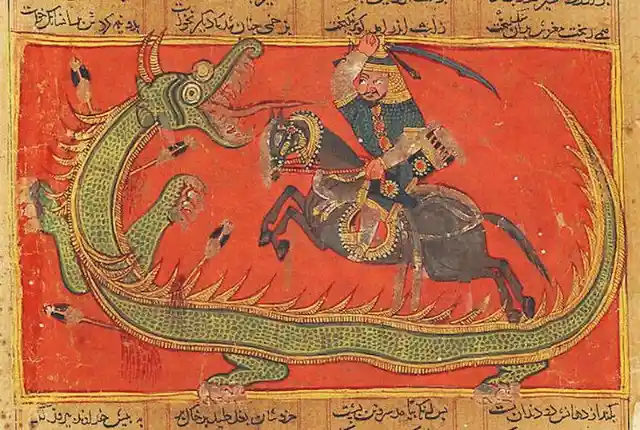

In Zoroastrian texts, the three-headed dragon named Aži Dahāka is said to be chained within the mountain and will only escape at the end of the world.
Islam Dominates The Rest
Islam is the predominant religion in Iran with 98% of the population practicing some form of it.


The 89% majority are Shia Muslims, while the remaining 9% minority are Sunni Muslims. The other groups to make up the population include Bahá'ís, Mandeans, Yarsanis, Zoroastrians, Jews, and Christians.
6 in 10 People Are Persian
Pictured above, in the Zagros Mountains, the nomadic Qashqai and Bakhtiari tribes traditionally travel with the seasons, seeking out green meadows and water for their herds of goats, and sheep.


In terms of ethnic groups, Iran's population is made up of Persians 61%, Azerbaijanis 16%, Kurds 10%, Lurs 6%, Turkmens 2%, Arabs 2%, Baloch 2%, and Others 1%.
Asia's Highest Volcanic Mountain
Located 41 miles (66 kilometers) northeast of Tehran, the volcanic Mount Damāvand stands at 4,667 m (15,312 ft) which makes it the 12th highest mountain in the world, and the second-highest in Asia, after Mount Everest.


The mountain last erupted in 5300 BCE.
Limited Internet
From the beginning of 2012, Iran began implementing its own national state-controlled intranet network.


Nearly 50% of the top 500 websites in the world are blocked, such as Facebook, YouTube, Twitter, GooglePlus, with others such as Instagram and Telegram heavily restricted. The sites blocked cover topics such as topics blocked include health, science, sports, news, and shopping.
The Most Popular Sport
The Iranian national football team have qualified for the FIFA World Cup five times (1978, 1998, 2006, 2014, and 2018), and have also won three Asian Cup championships (1968, 1972, and 1976).


It is one of the most successful national teams in Asia. Former footballer, Ali Daei from Iran, is currently the world's all-time leading goalscorer in men's international matches.
The Magical "Doogh"
Popular in Iran, "Doogh" is a cold savory yogurt-based beverage that is mixed with salt. Its name comes from the Persian word for milking, "dooshidan".


Widely used in Persian traditional medicine, yogurt is said to be a helpful treatment for a number of health issues such as colds and coughs, as a treatment for ulcers, and relief for sunburn.
It is also rumored to prolong youth as it moderates body temperature and dryness. As such it is used as a facemask in Iranian beauty therapy.
An Abundance Of Flavors
As Iran's culinary culture interacted with many of its neighbors, both near and far, over the centuries, it significantly impacted its cuisine.


Typical dishes include combinations of rice with meat, vegetables, and nuts. Herbs and spices are also readily used, along with plums, pomegranates, quince, prunes, apricots, and raisins.
Tea, Anyone?
Iranian food flavorings include saffron, dried lime and other types of sour flavoring, cinnamon, turmeric, and parsley. These are mixed and used in various dishes.


Tea widely consumed as the country is the 7th biggest tea producer. It is the first thing offered when a guest arrives and is traditionally served with a lump of sugar, as well as rock candies usually flavored with saffron.
Black Gold
Iran produces 1.5 billion crude barrels annually. The nation holds 10% of the entire world's oil reserves. On a daily basis, the country fills up 4 million crude oil barrels. This makes Iran the world's fourth larger producer of oil.


The Persian Gulf of which Iran is one country holds a staggering 60% of the world's oil reserves. The other countries which make up the Persian Gulf are Iraq, Kuwait, Saudi Arabia, Qatar, Bahrain, the United Arab Emirates, and Oman.
Prized Jewels Or Priced Jewels?
The Treasury of National Jewels in Tehran houses some of the rarest and most expensive jewelry found anywhere.
The imperial crown jewels of Iran include elaborate crowns, thirty tiaras, and numerous aigrettes, a dozen bejeweled swords and shields, a number of unset precious gems, numerous plates and other dining services cast in precious metals and encrusted with gems.


The crown jewels are believed to be so rich in value, that they are today still used as a reserve to back the Iranian currency.
Persia Or Iran?
On the Iranian New Year ("Nowruz") of 1935, ruler Reza Shah Pahlavi asked foreign delegates to use the term Iran, in all formal correspondences. Since that time, the use of the word "Iran" has become more common, at least in the Western World.


Following the 1979 Islamic Iranian Revolution, the Islamic Republic of Iran became the country's official name by referendum.
The name "Irān" means "land of the Aryans" in ancient Persian. The term "Persian" on the other hand, is a name given by outsiders. Iranians never historically referred to Iran by that name.
Eating The Right Way
It is common to see Iranian families dining while sitting on the floor. This is particularly true at dinner time in large families. Iranians also tend to eat with their right-hands rather than using any utensils.


It is customary to be told where to sit and try a little of everything which is served. Needless to say, don't eat before arriving at an Iranian family meal.
Tehran Is The Hottest Place
Iranian linguist and historian, Ahmad Kasravi, believed the word "Tehran" was derived from an Indo-European language and originally meant "the hot place" ("teh" or "keh" meaning hot, and "rān" meaning "place of").


Tehran being the capital city is the most populous city in Iran with 8.4 million in the city and 15 million in the larger Greater Tehran metropolitan area. Pictured is Tehran's Ab-o-Atash ("water and fire") Park is one of the largest skateparks in the Middle East.
The Persian Cat
"Gorbe Irâni" better known as the Persian Cat, is notable for its round face and short muzzle. Many of these long-haired cats were seen in hieroglyphics and the breed is said to have evolved on the high, cold plateaus of the country then known by outsiders as Persia.
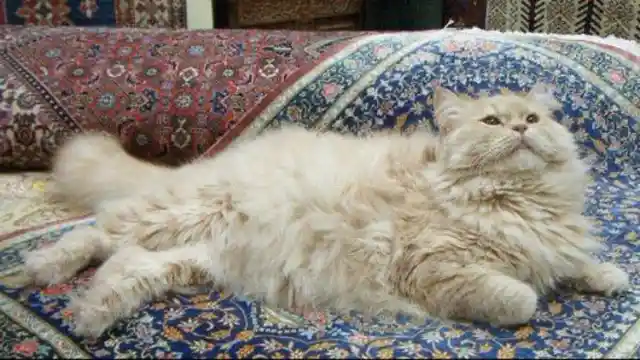

The first documented ancestors of the breed were imported into Italy from Khorasan, Iran around 1620 by Pietro della Valle.
Star Of David
Unknown for 30 years, on the roof of the Tehran International Airport's main terminal was a Jewish Star of David. It was only detected in 2001 after Google Earth hit the internet.


Needless to say, the Iranian government ordered the complete removal of the symbol. The airport was constructed by Israeli engineers at a time the two countries maintained close ties before the revolution.
UNESCO World Heritage Sites
Home to 23 UNESCO World Heritage site (and counting), Iran has a rich and storied history with Persia being one of the world's oldest civilizations.

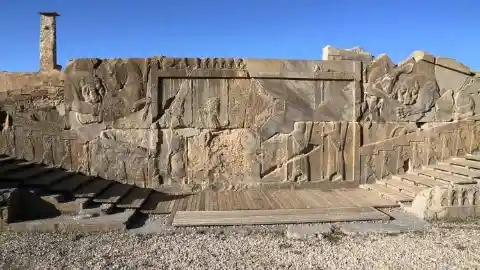
The Persepolis (pictured) was the ceremonial capital of the Achaemenid Empire in the years 550–330 BCE and built under the instructions of Darius I, also known as Darius the Great.
The Fire Of The Warriors
Pictured is the Takht-e Soleymān ("Throne of Solomon"), also known as Azar Goshnasp ("the Fire of the Warriors"). According to folk legend, King Solomon used to imprison monsters inside a nearby 100-meter deep crater called Zendan-e Soleyman ("Prison of Solomon").
Solomon is also said to have created the flowing pond in the fortress.


Ancient palaces, holy places of worship, bazaars, and ancient water systems dominate the recognized list of UNESCO World Heritage sites in Iran.
Skiing Is Believing
When most people think of Iran, snow is probably not what they picture.


Although men and women in the past were made to ski separately, nowadays it usually a co-ed activity (even though such behavior is not officially authorized).
Imperfection Is Perfection
Iranian have woven carpets for more than 2,500 years. Therefore it is one of the oldest industries in the country. Even today, after oil, it remains the country's biggest export commodity.


A little-known fact regarding Persian rugs is that it is never perfect with every rug having one "mistake". This is due to the Muslim belief that only Allah can be perfect.
To Taarof...
"Taarof" is a social type of behavior which dictates how people treat each other. Often the true meaning of what is said is not in the words themselves which can be confusing to non-locals.


People will refuse an offer when they actually want to accept, say what they don't mean, express what they don't feel, invite when not intending to follow through, and replace bad news with false hope.
...Or Not To Taarof?
To Iranians, kind words are important, and having a back and forth insistence is customary in every interaction.


Somehow, this behavior cultivates social stability among classes, since when both persons do it, they achieve equality. The prevalence of Taarof means Iranians have a unique style of negotiation where reading between the lines is crucial.
Temporary "Marriages"
In Iran, the government allows short-term marriages called Sigheh. The duration of the marriage and the amount (mahr) must be specified and agreed upon in advance.


Under Twelver Shia Islam (Imamiyyah), these temporary marriages (basically having a concubine) is one of Shi'ism's most controversial regulations. These agreements can last from a few hours to a number of years.
Opium Is Legal
Since alcohol is illegal in Iran, millions take to opium which is both easy to get and cheap to purchase in Iran for as little as 3 grams for $1.


Iran has one of the highest per capita number of opiate addicts in the world with 2 million Iranians or 2.8% of the population over 15 addicted to the drug.
Poets Paradise
As Persian literature spans two and a half millennia, Persian poets such as Ferdowsi, Sa'di, Hafiz, Attar, Nezami, Rumi and Omar Khayyam are today known in the West, having influenced literature in many countries.


The literary institute in Shiraz has a reputation as a city of great poets and poems. In this building, anyone can pen verses and hang them on the wall, either their own creations or an old favorite.
Caviar Capital
Apart from oil, Iran is also well-known for several other rare commodities such as saffron, caviar, and pistachios. The country controls 50% of the Caspian Sea caviar market.


The eggs of the Beluga (sturgeon) are priced at $160 per ounce (28 grams). These creatures normally live to be 100-years-old. Unfortunately, the fish population is rapidly shrinking due to overfishing.
Jews In Iran
When it comes to religion in Iran, over 99% of the population is Muslim with 89% of them being Shi’a Muslims. There are other religious groups who make up the other one percent. Surprisingly Jewish people are part of that 1%.

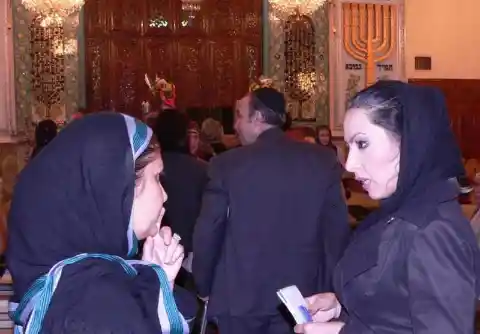
Iran is the burial ground of a number of history’s biblical figures. Some of those notable figures are Queen Esther, the prophet Daniel, Cyrus the Great and Darius the Great.
A Cheetah In Danger
Native to Iran, the Asiatic Cheetah, tagged the Iranian Cheetah, currently faces an extremely high risk of extinction in the wild and has been classified a critically endangered species by the International Union for Conservation of Nature. Only 50 remain in today.


Fortunately, the animal lives in protected areas in the eastern-central arid region of Iran which has a very low human population density.
Air Pollution
It’s not just the government’s tight grip on the capital, Tehran, that makes it hard to breathe; it’s the air pollution too.


Tehran claims an estimated 27 lives a day are lost because of air pollution-related diseases.
Difficult Divorces
After the Iranian Revolution of 1979, women’s rights were greatly downgraded. Now if a man and woman divorce, the woman loses all custody of her children.


And seeing as polygamy is allowed in Iran, the man has enough choices.
Young Brides
Make sure you have your reading glasses on for this one because you’re about to read correctly. From the age of 13, girls can get married.


Boys need to wait a little longer – from their 15th birthday only. Talk about getting out of the house at a young age.
10 Neighbors
Take a look on a map and you’ll notice just how huge Iran is, but you’ll also notice just how many countries it shares a border with.


Those ten countries are Arme¬nia, Azer¬bai¬jan, Turkmenistan, Afghanistan, Pak¬istan, Oman, United Arab Emi¬rates, Kuwait, Iraq, and Turkey.
Iran Flag
The current Iranian flag was adopted in 1980 and has three equal horizontal bands of green, white, and red. Green is the color of Islam and represents growth, white symbolizes honesty and peace, and red stands for bravery and martyrdom.


Centered in the middle white band is the stylized representation of the word “Allah” and the phrase “La ilaha illa Allah” (“None is worthy of worship but Allah”) in the shape of a tulip. Along the inner edges of the green and red bands are 22 copies of the phrase Allahu Akbar (“God is great”).
Iran’s Army
Iran is a powerhouse in the Middle-East and could pose a major threat to any opposing force in the region.


Its military is made up of two sides of the armed forces: the Army, Air Force, and Navy, and then the Revolutionary Guards. The military totals about 545,000 active personnel and 350,000 reserve soldiers.
Axis Allies
Iran may not be directly involved in any conflicts in the Middle-East, but they definitely have their hand in them. Its military allies include Syria, Iraq, and Lebanon’s guerrilla military group, Hezbollah.


It doesn’t only provide military advice to these armed groups, but also financial aid and weapons. Iranian-made missiles displayed at the Holy Defense Museum in Tehran.
Speaking Out
In Iran, you’d better not badmouth Supreme Leader Ali Khamenei because the punishment is a little more than a slap on the wrist.
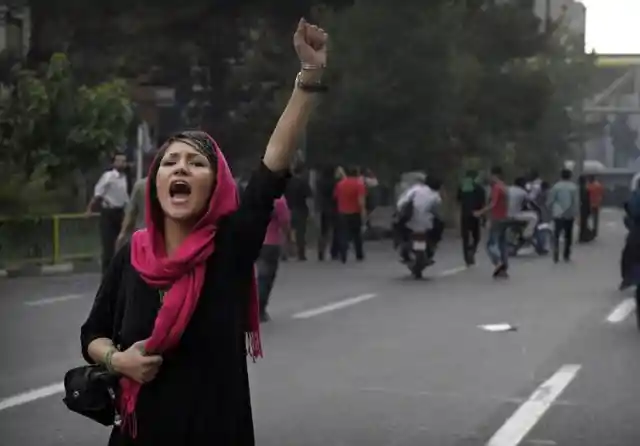

Insulting the supreme leader has led some people to torture, imprisonment, and even execution.
Supreme Leader
What do you need a president for when you have a supreme leader? The supreme leader of Iran, Ali Khamenei, has more power than anyone in Iran. He is the commander-in-chief of the military.


He directly appoints the heads of the judiciary, the state radio, and television networks, as well as the commanders of the police and military forces. At the end of the day, the supreme leader alone decides whether there will be peace or war.